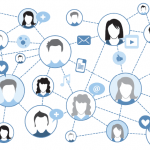Dr. Levengood also posts and follows threads on Twitter, describing it as an easy way to learn about other medical specialties, as well as rheumatology. Wary physicians can start slow, she advises, by signing onto some feeds and visiting a few blogs. “It can be done with very little outward investment of time, other than reading these like you would read emails and [medical] journals.”
But some rheumatologists aren’t as enthusiastic. Michael Lockshin, MD, abandoned his Twitter connection, finding it too intrusive, in part because he keeps his smartphone handy during office hours in case his family needs to reach him.
In short, the online twittering became irritating, says Dr. Lockshin, director of the Barbara Volcker Center and Rheumatic Diseases at the Hospital for Special Surgery in New York City. “When I’m working with patients, I need isolated time,” he says. “First of all, I’m not interested particularly in telling people what I’m doing every few minutes. And most of the stuff that I’ve seen on Twitter is pretty unimportant and not helpful to me.”
Those who do want to follow Twitter feeds on their mobile devices but don’t want to be interrupted every time a new tweet is posted can modify the notifications settings on their device to turn off alerts.
Connection and Disruption
Dr. Lockshin isn’t reluctant to talk with patients through cyberspace. He frequently prefers e-mail to phone communication, because he can respond while a patient is getting dressed or during other small time windows. He might assist with a medication refill or peer at a downloaded photo of a swollen joint. “I have answered [patients’] very intimate sexual [medical] questions on e-mail, as long as they understand that e-mails are not as private as they think they are,” he says.
But like his Twitter experience, Dr. Lockshin’s professional foray into Facebook proved to be difficult. He created a page several years ago, largely to help promote his book, “Dancing at the River’s Edge: A Patient and Her Doctor Negotiate Life with Chronic Illness” (Schaffner Press, Inc., 2009). However, friend-related logistics soon became thorny, he says.
Initially, he accepted patient “friend” requests. “But it was quickly out of hand—too many people had access to me,” he says. Plus, he became uneasy about how private the messages that patients were sending truly were, even those sent directly to him through Facebook’s messaging system. Or, he’d be contacted by patients he didn’t know, those living in remote parts of the country, with specific health questions.

